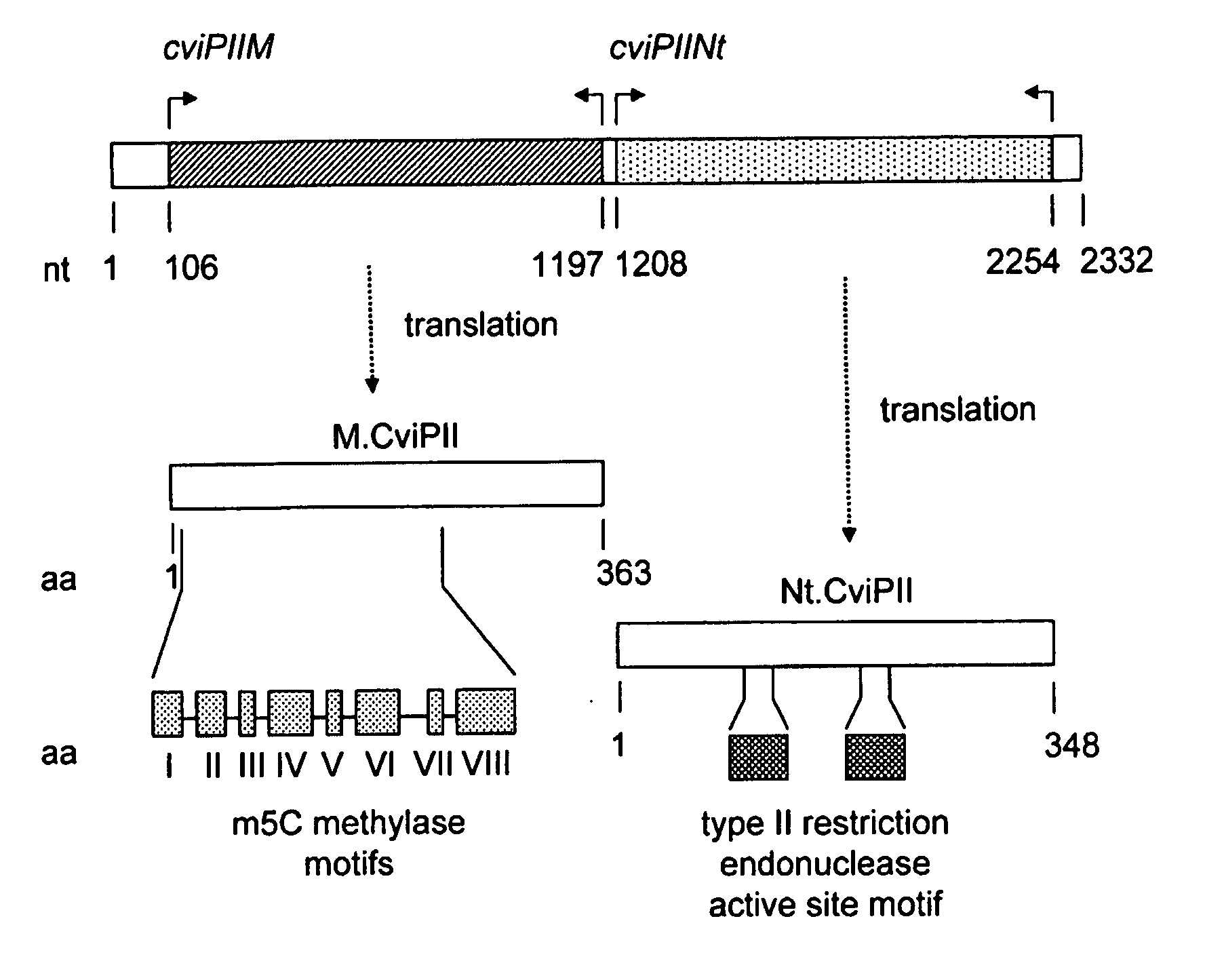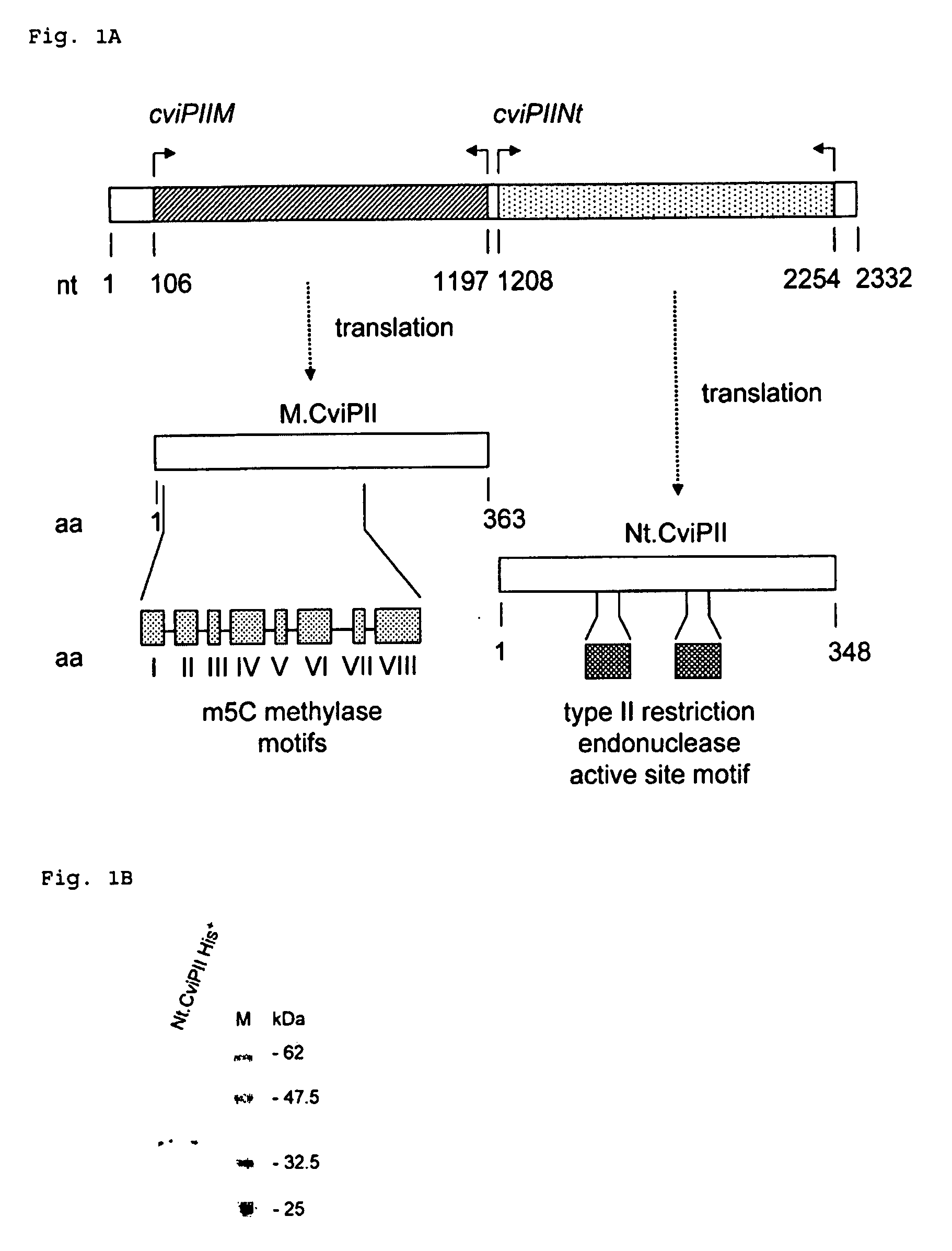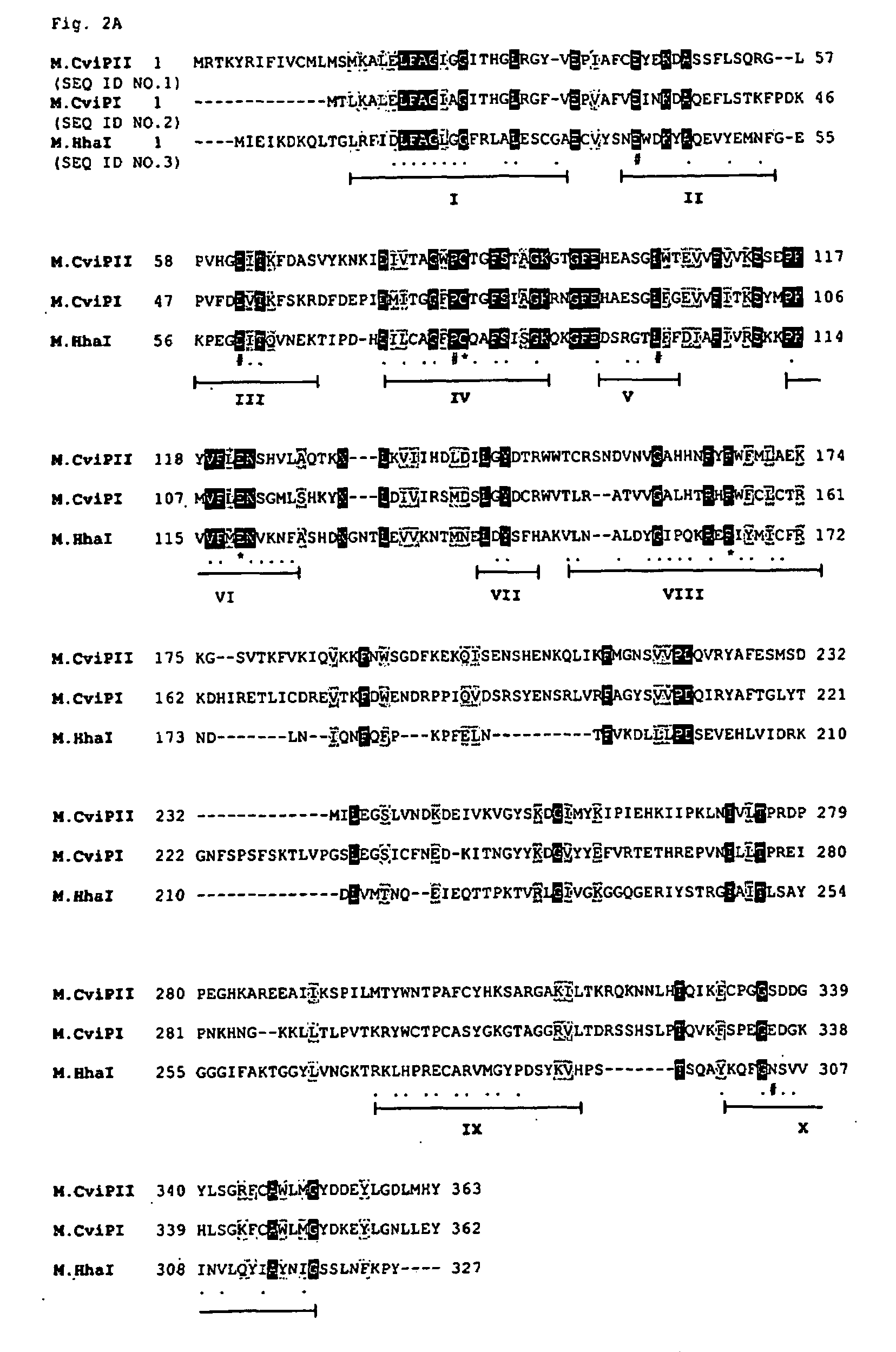Recombinant Dna Nicking Endonuclease and Uses Thereof
a technology of nicking endonuclease and dna, which is applied in the field of nicking endonuclease of dna, can solve the problems of limited application potential of nicking endonuclease in dna manipulation
- Summary
- Abstract
- Description
- Claims
- Application Information
AI Technical Summary
Benefits of technology
Problems solved by technology
Method used
Image
Examples
example 1
Cloning and Identification of cviPII M and cviPIINt
[0078]Chlorella virus NYs-I genomic DNA was digested partially with Sau3AI and ligated to a BamHI-digested and CIP-treated pUCAC (a derivative of pUC19 by inserting a PCR-amplified chloramphenicol resistant gene into AfIIII site of pUC19) and the ligated DNA was used to transform ER1992 competent cells to construct a Sau3AI genomic DNA library.
[0079]Approximately 105 ampicillin resistant transformants were pooled and plasmid DNA was prepared. Clones that expressed M.CviPII methylase were selected by digesting pooled ampicillin and chloramphenicol resistant plasmids with MspI (cleaves CCGG and CmCGG sequences but not mCCGG sequence). Eighteen plasmids from the Sau3AI genomic library were found to be partially resistant to MspI digestion. The inserts of six isolates were sequenced, which revealed an identical open reading frame (ORF, 1092 bp) that had 45.2% amino acid (aa) identity to the NYs-I encoded M.CviPI (recognition sequence GC...
example 2
Expression and Purification of Nt.CviPII
[0085]Due to the frequent Nt.CviPII nicking sites, difficulties in cloning the cviPHNt gene in E. coli were encountered. Initially, Nt.CviPII was expressed using in vitro transcription and translation system. A low level of nicking activity was detected in the lysate in comparison with the native Nt.CviPII. However, it was difficult to achieve a clear digestion pattern. To achieve sufficient enzyme for purification, the Nt.CviPII system was modified for expression in E. coli. The expression host ER2683 was pre-modified by expression of M.CviPII via introduction of pUC-cviPIIM. Additional measures were taken to construct a stable expression clone: (i) A low copy number plasmid pR976 with Ptac (pI5A replication origin) was used as the cloning vector for the cviPIINt gene; (ii) The cviPIINt gene was inserted 18 nucleotides downstream of the ribosome-binding site so as to reduce the expression level of the enzyme. The efforts to express M.CviPII i...
example 3
Truncation Mutants of Nt.CviPII: Cloning. Expression, and Purification of C-terminal Truncation Mutants of Nt.CviPII
[0097]DNA oligos were designed such that they served as primers for PCR amplification of two truncation mutants of Nt.CviPII. The primers also added NdeI and SapI sites at the 5′ and 3′ end of the amplified DNA, respectively, for cloning purposes: NPN297 (NP NdeI-F and NPN297-SapIR) and NPN829 (Np NdeI-F and NPN329-SAPIR).
NP-NdeI-F(SEQ ID NO:23)5′ ACCGTTGAGCAIAIGTATATATATATGTCTACTCCGCAGGCAAAG 3′NPN297-SapI-R(SEQ ID NO: 24)5′ GGTGGT TGCTCTTC CGCAACAGGAAGAAGAAATTAATTCTATTTTATTTTTCAAAACATCATCGAT3′NPN329-SapI-R(SEQ ID NO:25)5′ GGTGGTTGCTCTTCCGCAGCATTTTGGTGGACTTGTTATTTTCTTTGATTTTGG 3′
[0098]Mutants NPN297 and NPN329 were generated such that they contains the first 297 aa (C-terminal deletion of 51 aa residues) and 329 aa (C-terminal deletion of 19 aa residues) of Nt.CviPII, respectively. The amplified DNA was ligated to pTXBI (New England Biolabs, Inc., Ipswich, Mass.) at Nd...
PUM
| Property | Measurement | Unit |
|---|---|---|
| temperature | aaaaa | aaaaa |
| temperature | aaaaa | aaaaa |
| temperature | aaaaa | aaaaa |
Abstract
Description
Claims
Application Information
 Login to View More
Login to View More - R&D
- Intellectual Property
- Life Sciences
- Materials
- Tech Scout
- Unparalleled Data Quality
- Higher Quality Content
- 60% Fewer Hallucinations
Browse by: Latest US Patents, China's latest patents, Technical Efficacy Thesaurus, Application Domain, Technology Topic, Popular Technical Reports.
© 2025 PatSnap. All rights reserved.Legal|Privacy policy|Modern Slavery Act Transparency Statement|Sitemap|About US| Contact US: help@patsnap.com



